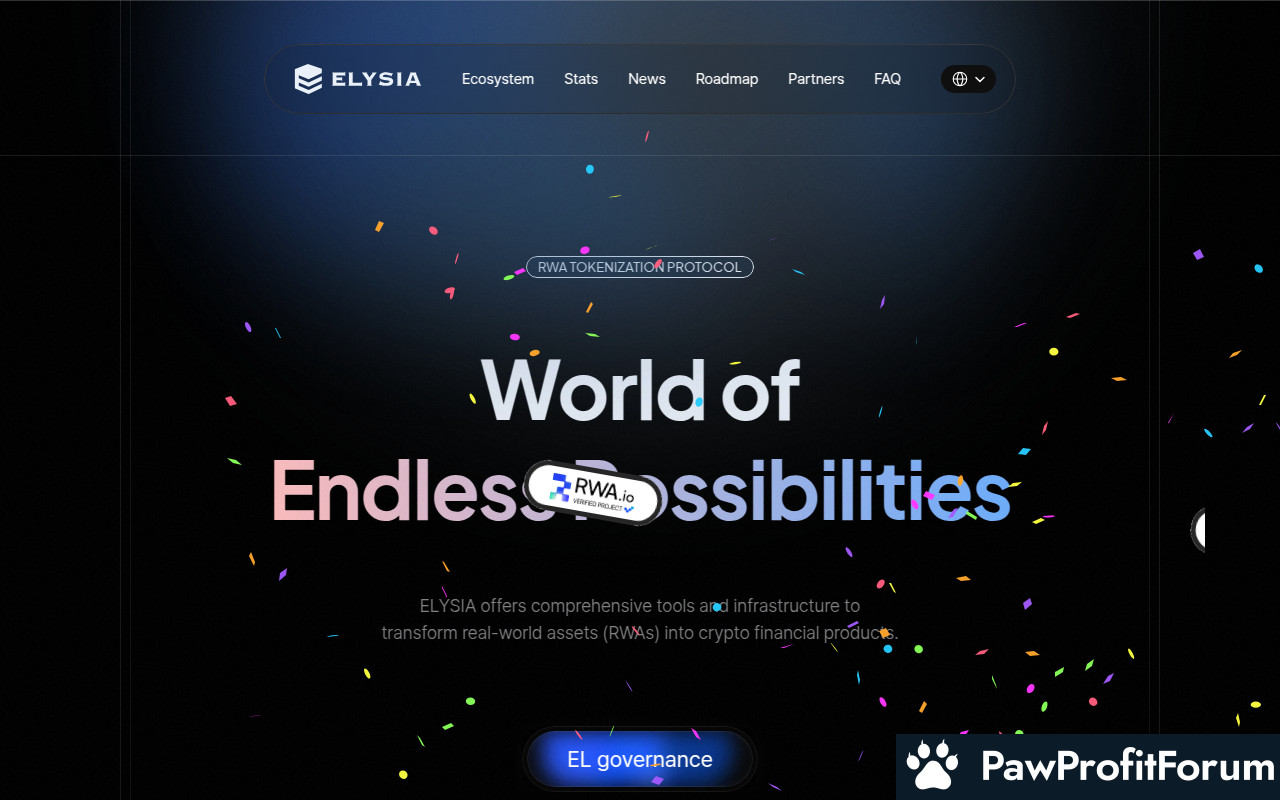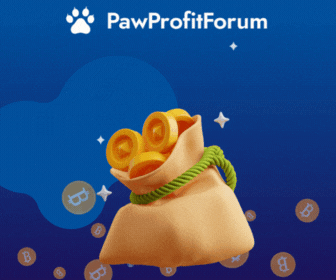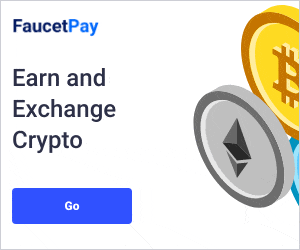ELYSIA is an RWA tokenization protocol that enables the trading of real-world assets around the world on the blockchain.
Its uses and core values are:
At the heart of ELYSIA is its decentralized autonomous organization (DAO), which provides the technological framework and incentives necessary for the digital transformation of tangible assets. The platform's core values include a minting fee structure, where fees are collected from asset token issuers. These fees vary by asset group and are subject to governance votes by active participants.
The EL token staking program is another cornerstone of ELYSIA's ecosystem. This program serves two primary purposes: granting voting rights for governance and offering rewards for participation. These rewards come from protocol revenue and mining revenue, incentivizing active engagement within the community.
ELYSIA's team comprises experts from various fields, contributing to the project's continuous evolution. The platform's collaborative nature invites contributions from a diverse range of professionals, enhancing its robustness and adaptability. This multifaceted approach ensures that ELYSIA remains at the forefront of integrating traditional finance with the dynamic world of cryptocurrencies.
One of the standout features of ELYSIA is its ability to tokenize real-world assets. Tokenization involves converting ownership rights of an asset into a digital token on the blockchain. This process not only enhances transparency but also democratizes access to assets that were previously out of reach for many individuals. For instance, real estate properties can be tokenized, enabling fractional ownership and investment opportunities for a broader audience.
Security is paramount in the ELYSIA ecosystem. The blockchain technology underpinning ELYSIA employs advanced cryptographic techniques to ensure data integrity and prevent unauthorized access. Each transaction is recorded in a decentralized ledger, which is immutable and transparent. This decentralized nature makes it exceedingly difficult for bad actors to manipulate the system, as altering any information would require consensus from the majority of the network participants.
The ELYSIA Protocol also incorporates a staking program for its EL tokens. Users can lock their EL tokens within the protocol, granting them governance voting rights. This means that token holders have a say in the decision-making processes, such as changes to the fee structure or other protocol upgrades. Additionally, participants in the staking program are rewarded with a share of the protocol's revenue and mining rewards, incentivizing active involvement and contribution to the ecosystem.
Flexibility and risk management are further enhanced by ELYSIA's ability to operate with multiple mainnets. This multi-chain compatibility ensures that the protocol can adapt to various blockchain environments, providing resilience and reducing dependency on a single network. This approach not only mitigates risks associated with network-specific issues but also opens up opportunities for cross-chain interactions and integrations.
The ELYFI protocol, a component of the ELYSIA ecosystem, plays a crucial role in making real-world assets more accessible and transparent. By leveraging blockchain technology, ELYFI facilitates the tokenization process, ensuring that asset information is accurate, verifiable, and easily accessible to all stakeholders. This transparency fosters trust and confidence among users, which is essential for the widespread adoption of digital asset solutions.
Minting fees are another aspect of the ELYSIA Protocol. Asset token issuers are required to pay a fee to mint new tokens, and this fee varies depending on the asset group. Any changes to the fee structure are subject to votes by active participants, ensuring that the community has a voice in the economic aspects of the protocol. This democratic approach aligns with the decentralized ethos of blockchain technology, promoting fairness and inclusivity.
ELYSIA is structured as a decentralized autonomous organization (DAO), which means that it operates without a central authority. Instead, decisions are made collectively by the community of token holders. This decentralized governance model ensures that the protocol evolves in a way that reflects the interests and needs of its users, rather than being driven by a single entity or group.
The technology behind ELYSIA is a comprehensive framework that integrates real-world assets with blockchain technology, providing a secure, transparent, and democratic platform for asset tokenization and digital transformation.
Another significant application of ELYSIA is the creation of contracts that can exist both in the real world and on the blockchain. These smart contracts ensure that the terms of agreements are automatically enforced, reducing the need for intermediaries and minimizing the risk of fraud. This dual existence of contracts enhances trust and security in transactions involving real-world assets.
ELYSIA also collaborates with various mainnets to provide users with greater flexibility and to mitigate risks associated with relying on a single blockchain network. This multi-chain approach ensures that users can choose the most suitable network for their needs, enhancing the overall user experience.
In addition to these applications, ELYSIA has partnered with DWF Labs to accelerate innovation in global asset tokenization. This partnership aims to explore new ways to tokenize a wide range of assets, further expanding the potential uses of ELYSIA's technology.
Furthermore, ELYSIA's protocol includes a minting fee system, where asset token issuers pay fees to mint new tokens. These fees vary depending on the asset group and are subject to governance votes by active participants. This system ensures that the protocol remains sustainable and that participants have a say in its operation.
ELYSIA also operates a staking program for its EL tokens. This program serves two main purposes: granting the right to vote on governance issues and providing rewards for participation. Participants can earn rewards from protocol revenue and mining activities, incentivizing active involvement in the ecosystem.
In the realm of real estate, ELYSIA's technology enables the tokenization of properties, making it easier for people to invest in real estate without the need for large capital outlays. This democratizes access to real estate investments and opens up new opportunities for investors of all sizes.
Additionally, ELYSIA's applications extend to battery management, where its technology can be used to track and manage the lifecycle of batteries, ensuring efficient use and recycling. This application highlights the versatility of ELYSIA's technology in addressing various real-world challenges.
In March 2021, ELYSIA made significant strides by introducing the ELYSIA Protocol, which facilitates the digitization of real-world assets. This protocol allows for the creation of contracts that can exist both in the real world and on the blockchain, ensuring legal and logical digitization of assets. The protocol's compatibility with multiple mainnets further enhances its utility and reach.
Later in 2021, ELYSIA participated in TOKEN2049, a prominent cryptocurrency conference. This event provided a platform for ELYSIA to showcase its technology and vision to a broader audience, fostering connections within the blockchain community. The participation in such high-profile events underscores ELYSIA's commitment to staying at the forefront of blockchain innovation.
In 2022, ELYSIA continued to expand its presence by taking part in HK Web3 Month. This event highlighted the growing interest in Web3 technologies and provided ELYSIA with an opportunity to demonstrate its capabilities in integrating real-world assets with blockchain technology. The engagement in these events reflects ELYSIA's proactive approach to community building and industry collaboration.
A significant development occurred in 2023 when ELYSIA announced changes to its token economy. The revised token economy includes a substantial allocation of tokens for community use, emphasizing the importance of community participation in the project's governance and growth. This move aligns with ELYSIA's core values of decentralization and community-driven development.
In the same year, ELYSIA introduced a staking program for EL tokens. The staking program serves two main objectives: granting the right to vote for governance and providing rewards for participation. Participants in the staking program can earn rewards from protocol revenue and mining revenue, incentivizing active involvement in the ecosystem.
Additionally, ELYSIA's involvement in KBW 2024 further solidified its position in the blockchain space. This event, known for attracting key players in the industry, allowed ELYSIA to present its advancements and future plans to a global audience. The continuous participation in such events highlights ELYSIA's dedication to fostering innovation and collaboration within the blockchain community.
Throughout its journey, ELYSIA has remained focused on its mission to digitize real-world assets and integrate them with blockchain technology. The introduction of the ELYSIA Protocol, participation in major industry events, and the implementation of a robust token economy and staking program are key milestones that have shaped ELYSIA's trajectory in the blockchain space.
Its uses and core values are:
- Minting fee ELYSIA Protocol will collect minting fees from the asset token issuer. The price for minting asset tokens varies by asset group while any changes in the fee structure will be subject to votes by Active Participants.
- Staking program ELYSIA Protocol operates a EL token staking program. There are two main objectives: 1) Granting the right to vote for governance 2) Rewards for participation : Protocol revenue + Mining revenue
What is ELYSIA?
ELYSIA (EL) is a pioneering project that seeks to bridge the gap between traditional financial assets and the burgeoning world of cryptocurrencies by digitizing real-world assets through blockchain technology. This innovative approach allows for the conversion of illiquid assets into crypto financial products, thereby enhancing liquidity and accessibility.At the heart of ELYSIA is its decentralized autonomous organization (DAO), which provides the technological framework and incentives necessary for the digital transformation of tangible assets. The platform's core values include a minting fee structure, where fees are collected from asset token issuers. These fees vary by asset group and are subject to governance votes by active participants.
The EL token staking program is another cornerstone of ELYSIA's ecosystem. This program serves two primary purposes: granting voting rights for governance and offering rewards for participation. These rewards come from protocol revenue and mining revenue, incentivizing active engagement within the community.
ELYSIA's team comprises experts from various fields, contributing to the project's continuous evolution. The platform's collaborative nature invites contributions from a diverse range of professionals, enhancing its robustness and adaptability. This multifaceted approach ensures that ELYSIA remains at the forefront of integrating traditional finance with the dynamic world of cryptocurrencies.
What is the technology behind ELYSIA?
The technology behind ELYSIA (EL) is an intricate blend of blockchain innovation and real-world asset integration. At its core, ELYSIA operates on the ELYSIA Protocol, which is designed to digitize tangible assets, making them accessible and transparent through blockchain technology. This protocol allows for the creation of contracts that exist both in the physical world and on the blockchain, seamlessly bridging the gap between traditional assets and digital finance.One of the standout features of ELYSIA is its ability to tokenize real-world assets. Tokenization involves converting ownership rights of an asset into a digital token on the blockchain. This process not only enhances transparency but also democratizes access to assets that were previously out of reach for many individuals. For instance, real estate properties can be tokenized, enabling fractional ownership and investment opportunities for a broader audience.
Security is paramount in the ELYSIA ecosystem. The blockchain technology underpinning ELYSIA employs advanced cryptographic techniques to ensure data integrity and prevent unauthorized access. Each transaction is recorded in a decentralized ledger, which is immutable and transparent. This decentralized nature makes it exceedingly difficult for bad actors to manipulate the system, as altering any information would require consensus from the majority of the network participants.
The ELYSIA Protocol also incorporates a staking program for its EL tokens. Users can lock their EL tokens within the protocol, granting them governance voting rights. This means that token holders have a say in the decision-making processes, such as changes to the fee structure or other protocol upgrades. Additionally, participants in the staking program are rewarded with a share of the protocol's revenue and mining rewards, incentivizing active involvement and contribution to the ecosystem.
Flexibility and risk management are further enhanced by ELYSIA's ability to operate with multiple mainnets. This multi-chain compatibility ensures that the protocol can adapt to various blockchain environments, providing resilience and reducing dependency on a single network. This approach not only mitigates risks associated with network-specific issues but also opens up opportunities for cross-chain interactions and integrations.
The ELYFI protocol, a component of the ELYSIA ecosystem, plays a crucial role in making real-world assets more accessible and transparent. By leveraging blockchain technology, ELYFI facilitates the tokenization process, ensuring that asset information is accurate, verifiable, and easily accessible to all stakeholders. This transparency fosters trust and confidence among users, which is essential for the widespread adoption of digital asset solutions.
Minting fees are another aspect of the ELYSIA Protocol. Asset token issuers are required to pay a fee to mint new tokens, and this fee varies depending on the asset group. Any changes to the fee structure are subject to votes by active participants, ensuring that the community has a voice in the economic aspects of the protocol. This democratic approach aligns with the decentralized ethos of blockchain technology, promoting fairness and inclusivity.
ELYSIA is structured as a decentralized autonomous organization (DAO), which means that it operates without a central authority. Instead, decisions are made collectively by the community of token holders. This decentralized governance model ensures that the protocol evolves in a way that reflects the interests and needs of its users, rather than being driven by a single entity or group.
The technology behind ELYSIA is a comprehensive framework that integrates real-world assets with blockchain technology, providing a secure, transparent, and democratic platform for asset tokenization and digital transformation.
What are the real-world applications of ELYSIA?
ELYSIA (EL) is a decentralized autonomous organization (DAO) that aims to revolutionize the way real-world assets are managed and traded by leveraging blockchain technology. One of its primary applications is bridging the gap between traditional financial assets and cryptocurrencies. This is achieved by digitizing real-world assets, such as real estate, and representing them on the blockchain. This digital transformation allows for more efficient and transparent transactions, making it easier for individuals and institutions to invest in and trade these assets.Another significant application of ELYSIA is the creation of contracts that can exist both in the real world and on the blockchain. These smart contracts ensure that the terms of agreements are automatically enforced, reducing the need for intermediaries and minimizing the risk of fraud. This dual existence of contracts enhances trust and security in transactions involving real-world assets.
ELYSIA also collaborates with various mainnets to provide users with greater flexibility and to mitigate risks associated with relying on a single blockchain network. This multi-chain approach ensures that users can choose the most suitable network for their needs, enhancing the overall user experience.
In addition to these applications, ELYSIA has partnered with DWF Labs to accelerate innovation in global asset tokenization. This partnership aims to explore new ways to tokenize a wide range of assets, further expanding the potential uses of ELYSIA's technology.
Furthermore, ELYSIA's protocol includes a minting fee system, where asset token issuers pay fees to mint new tokens. These fees vary depending on the asset group and are subject to governance votes by active participants. This system ensures that the protocol remains sustainable and that participants have a say in its operation.
ELYSIA also operates a staking program for its EL tokens. This program serves two main purposes: granting the right to vote on governance issues and providing rewards for participation. Participants can earn rewards from protocol revenue and mining activities, incentivizing active involvement in the ecosystem.
In the realm of real estate, ELYSIA's technology enables the tokenization of properties, making it easier for people to invest in real estate without the need for large capital outlays. This democratizes access to real estate investments and opens up new opportunities for investors of all sizes.
Additionally, ELYSIA's applications extend to battery management, where its technology can be used to track and manage the lifecycle of batteries, ensuring efficient use and recycling. This application highlights the versatility of ELYSIA's technology in addressing various real-world challenges.
What key events have there been for ELYSIA?
ELYSIA (EL) stands out as a decentralized autonomous organization (DAO) focused on the digital transformation of real-world assets. By integrating blockchain technology with traditional financial assets, ELYSIA aims to bridge the gap between these two worlds through its innovative ELYSIA Protocol.In March 2021, ELYSIA made significant strides by introducing the ELYSIA Protocol, which facilitates the digitization of real-world assets. This protocol allows for the creation of contracts that can exist both in the real world and on the blockchain, ensuring legal and logical digitization of assets. The protocol's compatibility with multiple mainnets further enhances its utility and reach.
Later in 2021, ELYSIA participated in TOKEN2049, a prominent cryptocurrency conference. This event provided a platform for ELYSIA to showcase its technology and vision to a broader audience, fostering connections within the blockchain community. The participation in such high-profile events underscores ELYSIA's commitment to staying at the forefront of blockchain innovation.
In 2022, ELYSIA continued to expand its presence by taking part in HK Web3 Month. This event highlighted the growing interest in Web3 technologies and provided ELYSIA with an opportunity to demonstrate its capabilities in integrating real-world assets with blockchain technology. The engagement in these events reflects ELYSIA's proactive approach to community building and industry collaboration.
A significant development occurred in 2023 when ELYSIA announced changes to its token economy. The revised token economy includes a substantial allocation of tokens for community use, emphasizing the importance of community participation in the project's governance and growth. This move aligns with ELYSIA's core values of decentralization and community-driven development.
In the same year, ELYSIA introduced a staking program for EL tokens. The staking program serves two main objectives: granting the right to vote for governance and providing rewards for participation. Participants in the staking program can earn rewards from protocol revenue and mining revenue, incentivizing active involvement in the ecosystem.
Additionally, ELYSIA's involvement in KBW 2024 further solidified its position in the blockchain space. This event, known for attracting key players in the industry, allowed ELYSIA to present its advancements and future plans to a global audience. The continuous participation in such events highlights ELYSIA's dedication to fostering innovation and collaboration within the blockchain community.
Throughout its journey, ELYSIA has remained focused on its mission to digitize real-world assets and integrate them with blockchain technology. The introduction of the ELYSIA Protocol, participation in major industry events, and the implementation of a robust token economy and staking program are key milestones that have shaped ELYSIA's trajectory in the blockchain space.
Who are the founders of ELYSIA?
ELYSIA (EL) is a decentralized autonomous organization (DAO) designed to facilitate the digital transformation of real-world assets. The founders of ELYSIA include Donguk Seo, Jung-gun Lim, Yoon Kim, and Won-jun Cha. Donguk Seo has a background in blockchain technology and finance, playing a pivotal role in the strategic direction of ELYSIA. Jung-gun Lim brings expertise in software development and blockchain integration, contributing to the technical foundation. Yoon Kim focuses on business development and partnerships, while Won-jun Cha handles operational aspects and community engagement. Their combined efforts have shaped ELYSIA into a platform that emphasizes minting fees and a robust staking program.| Website | elysia.land/ |
| Website | docs.elysia.land/ |
| Socials | twitter.com/elysia_hq |
| Socials | github.com/elysia-dev |
| Socials | www.facebook.com/ElysiaHQ |
| Socials | t.me/elysia_official |
| Contracts | 0x2781...877b16 |
| Explorers | etherscan.io/token/0x2781246fe707bb15cee3e5ea354e2154a2877b16 |
| Wallets | metamask.io/ |
| Wallets | t.me/wallet |
| Wallets | tonkeeper.com/ |
| Wallets | mytonwallet.io/ |










